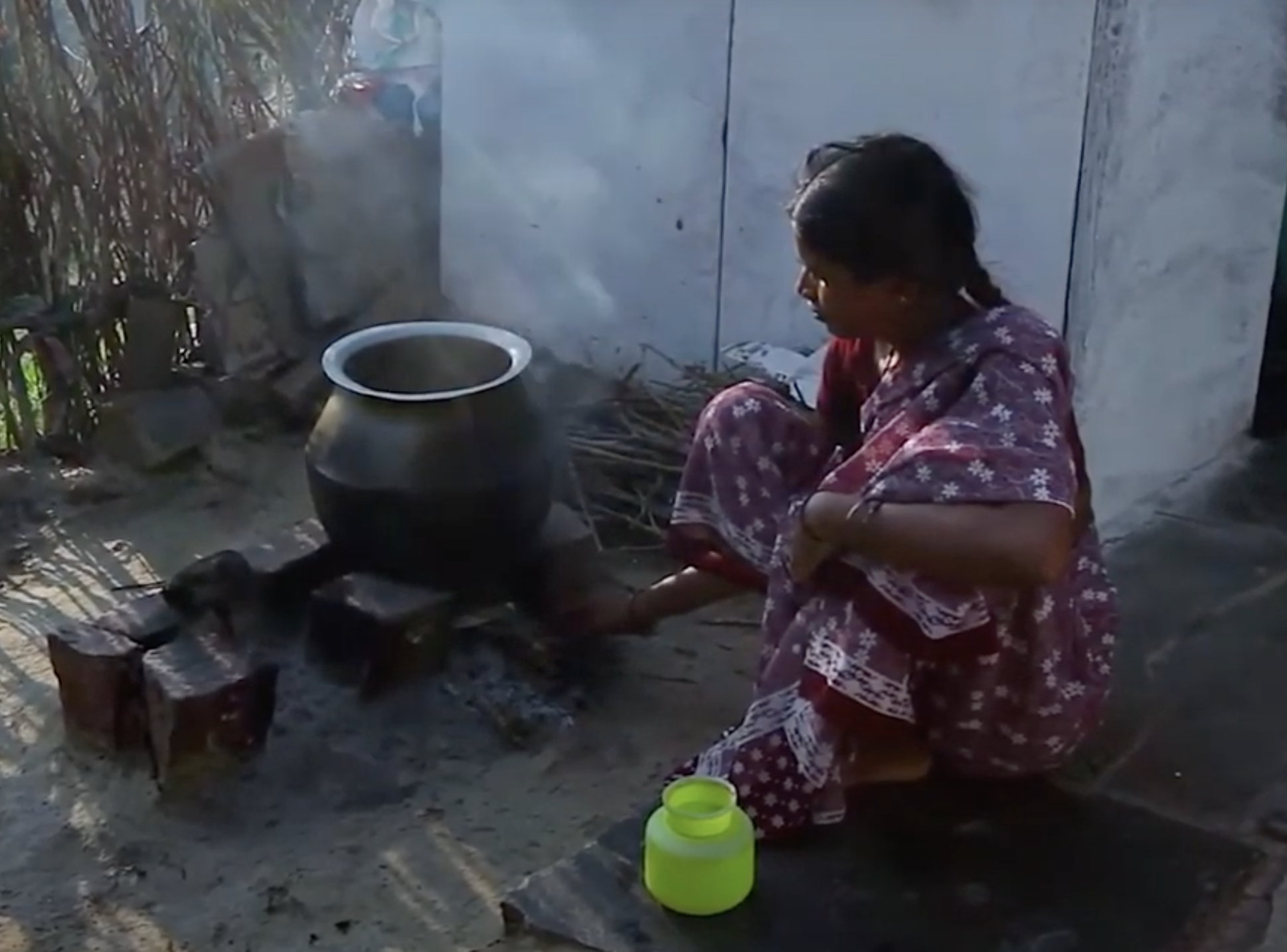Background
An urban slum community of 400+ families was living near Manipal, South Karnataka for over 30 years. They have migrated mostly from North Karnataka and are employed in the informal sector with majority as daily wage laborers, others owning small petty shops or working as contractors (employ 10-25 people) for small civil or construction projects. On average as daily laborers they earn Rs.200-500 per day. The settlement has makeshift houses despite their presence for over 30 years with very poor access to basic amenities like toilets, electricity, drinking water etc. In order to meet their lighting needs they use 5-6litres per month at Rs.45/litre (Rs200-300/month). Most of the children attend local govt. schools and in early 2013 a small playschool was set up within the settlement. In 2009, they were made to leave this private land settlement for another location on government land about 6 kms away from the city centre. The old settlement had no grid connectivity but the new location does have a connection but not many people are using it.
The search for a financing partner was very difficult with the SELCO branch staff having approached nearly 15 financial institutions. Each refused to participate based on requirement of land documents, collaterals, perceived high risk of the community, transaction costs for a small loan size and so on. Today 78 residents have availed solar lighting systems through financing from Hamsa Chaitayanya Cooperative Society. The founders of Hamsa Cooperative Society were known to SELCO senior manager handling financial relationships and he brought forward the idea of approaching them. The flexibility of the cooperative bank enabled it to design a loan product that was tailored to the cash flows of the end user and was not constrained by the usual documentation requirements of other financial institutions like nationalized banks or regional rural banks such as land entitlements. Further the managers of the cooperative society personally visited the site to understand the community dynamics and were confident of the people’s ability to pay when they learned of their fairly regular incomes and that their livelihoods were tied into construction work around Manipal area. While there was an element of risk as the customers were migrants the financial institution based on its visit and subsequent discussions felt confident to lend to the community.
Technological Solution
1.2-7W LED/CFL systems with mobile charging point, 10-20 W module, 10-30Ah batteries with warranty of panels (5yrs), batteries (5 yrs), electronics (5yrs), lamps (1 yr).and 1 yr free service.
Customization during installation and with fixtures using either astra/top candle in the house due to its small size and cluttered space inside to ensure maximum visibility.
Mounting structure for several panels were additionally secured to ensure stability since many of the panels could not be mounted on the house directly due to weak roofs.

Financial Model and Scheme
Financed by Hamsa Chaitanya Cooperative Society.
First 4 households there was 100% guarantee (4 instalments of Rs. 8000) of Rs. 32,000 as each family had to pay Rs. 2000 margin money. Weekly collection of Rs.200 minimum and all paid within 6-8months. Now, total 78 systems for loan amounts of Rs.8000-15000 per system @ 16% interest for a period of 6 months-1 year.
Project Nuances
The community asked to leave in 2009 which meant that systems had to be reinstalled. Repayment never faltered and SELCO did the reinstallation without passing the cost to the customer.
Convincing customers took 1 year of persistent weekly visits by branch to build trust. They had been duped in the past by people offering services like insurance, SHG services etc.
Not a single marketing material was used. All sales were through word of mouth.
Impact
Loans extended by the same FI for personal reasons like purchasing vehicle for transport business, marriages, land purchase etc.
A medical loan of Rs.100,000 was extended to assist a family in meeting emergency costs without any need for paperwork.
Community is more aware of basic financial planning. Over 200 savings accounts have been opened by residents.
Savings from purchase of kerosene for lighting and also creation of a long term asset
Key Aspects
Flexibility of the banker to customize financing (collection based on cash flow). The bank timed collection of payment from the customer on the day they receive their pay thereby ensuring less chances of default. This was also appreciated by the community who wanted to pay when they had money on hand.
Collection agent (pygmy) was hired by bank to go to community for payment rather than have people come to the bank every week. The banker understood this was not a convenient practice for them.
A guarantee fund that was reduced in installments against the outstanding amount for the first few customers as a mechanism to reassure the bankers of community’s ability to pay regularly
Other than a guarantee for the first 4 customers there was no further subsidy component used and Hamsa Cooperative Society went on to finance over 70 customers without any such risk management mechanism
Availability of flexible funding with SELCO to put down a risk guarantee fund
A champion bank manager who was willing to take the risk and a good interpersonal relationship subsequently developed by SELCO staff and him
